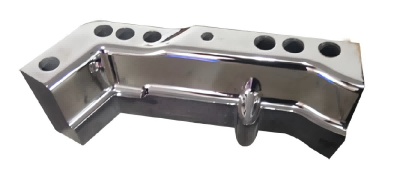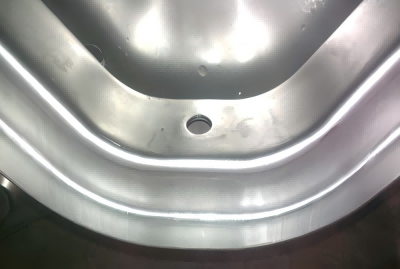Surface scratching is a common quality defect in the production process of stamped parts, which is widespread in major car manufacturer plants. One hand, it reduces the stability and productivity of the production process, leading to an increase in the scrap rate of parts, and on the other hand, it causes more serious wear and tear on the tooling, reduces the service life of tools and the accuracy of the stamped parts, also increases the number of mold repairs and production downtime.
The essence of the cause of scratching is due to the surface of the workpiece and mold localized adhesion (occlusion),there are variety of ways to improve the problem of scratches.the basic principle is to change the nature of the friction between the stamping tool and the stamped parts,so that the friction is replaced by materials that are not easy to adhere.After the tooling starting to produce the parts , there are generally the following ways to improve the problem of scratches:
1,Change the tool component material to increase its hardness;
2,Do the treatment to the surface of the workpieces, such as chrome plating, PVD and TD;
3,Nano-coating of tooling cavities, e.g. RNT treatment, etc.;
4,Adding a layer between the tooling and strip material to separate part from the tooling (e.g., applying lubrication or special lubricant or adding a layer of PVC or other material);
5,Use of self-lubricating coated steel sheets
Let's talk about the differences among TVD,PVD and RNT surface treatment.
TD briefly called Thermal Diffision Carbide Coating Process,The main features of TD coating are: high hardness, HV up to 3000, with high wear resistance, tensile and corrosion resistance properties.The service life of TD is around 100,000 times.But TD belongs to the high temperature treatment,so its requests high quality tooling steel material.During the treatment processing,the thermal stress,phase stress and the changes in specific volume will be easy to make the tool steel get deformation and even crack.In addition,after TD coating finished,it's very difficult to make secondary machining and hard to meet the needs of design changes and mold repair.Therefore,for the tools that the surface treatment has been done,it's necessary to remove the original treatment coating, otherwise its will affect the surface TD coating quality.Moreover, the service life of TD coating will be shorter after 3-4 times treatment.

PVD (Physical Vapor Deposition),PVD coating is a surface treatment made by physical vapor deposition. It has good tensile strength, the hardness of the coating can reach to HV2000-3000 or even higher, so it has excellent wear-resistant performance. The processing temperature is 500℃ relatively lower than TD , the workpiece deformation is small and can be processed many times without affecting the life. However, the combination of the coating layer and the workpieces is poor, in the deep drawn type of tooling and tooling with high pressure, it is easy to make the plating layer fall off, and it does not give play to its tensile strength and abrasion-resistant effect.

RNT is new technology in recent years. The concept is that the RNT coating liquid on the tooling cavity coating through the pressure to make the coating nanomolecules diffusion and role on the tooling surface to form a nano-metal carbide coating layer, the process of expansion from the inside to the outside, the thickness and hardness will be increased with the increase in the working time of tooling, The coating thickness is 0.1-1μm, the coating hardness is HV1100-1600, even when the mold is subjected to a large load, it will not cause the coating layer on the surface to fall off and fail due to the plastic deformation of the substrate, and the thickness and hardness increase from the inside to the outside with the increase of the mold's working time and the number of times it is coated. The thickness and hardness of the coating layer increases with the working time and the number of times of coating. 100-500 pieces can be guaranteed to be free from scratches after applying the RNT coating once. However, the application of this technology to parts with serious scratches, parts with production process heat and ultra-high-strength plates is still immature, and the cost is higher.

If you have any other ideas or suggestions,we warmly welcome you leave your message here.





